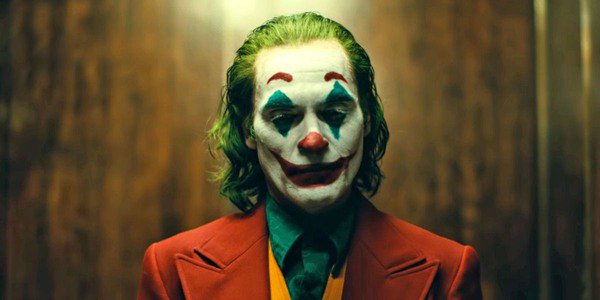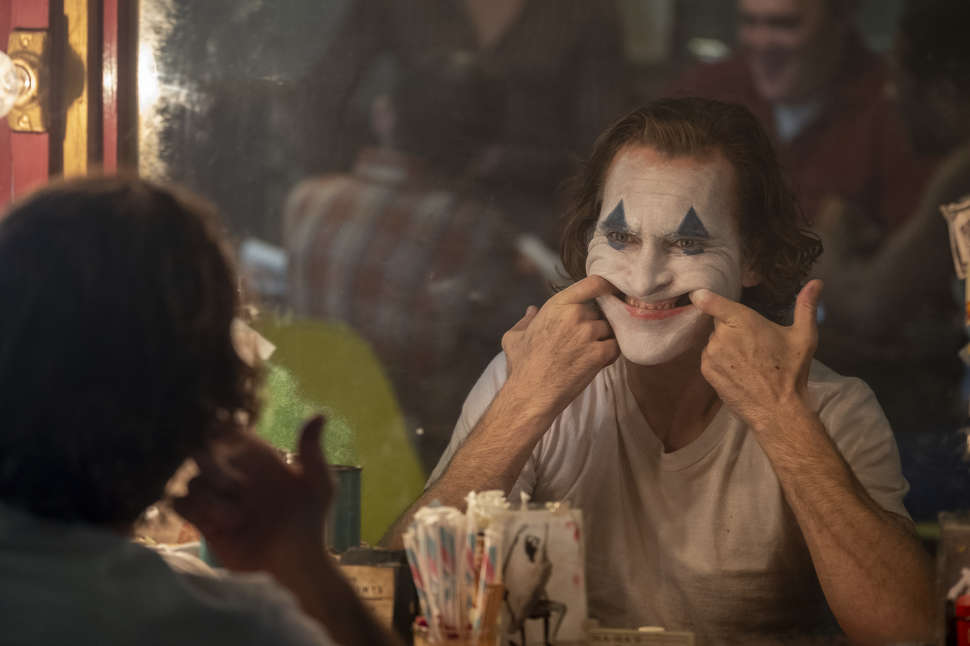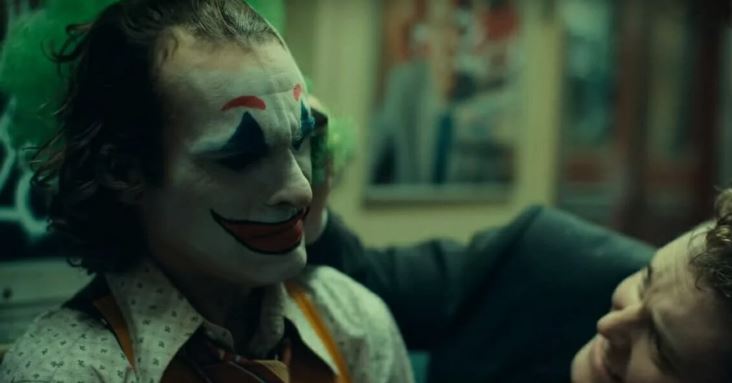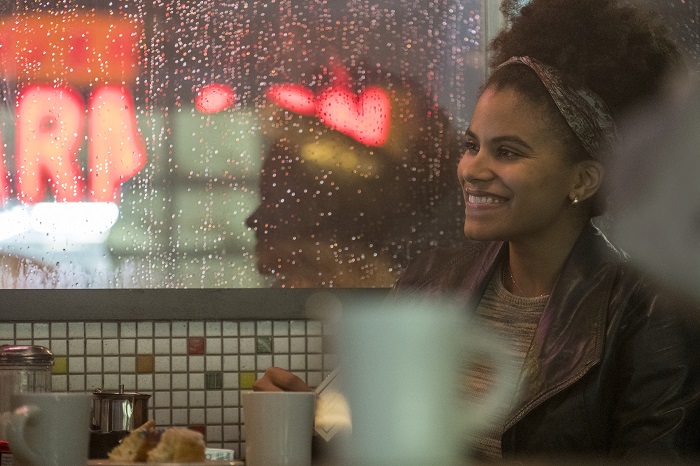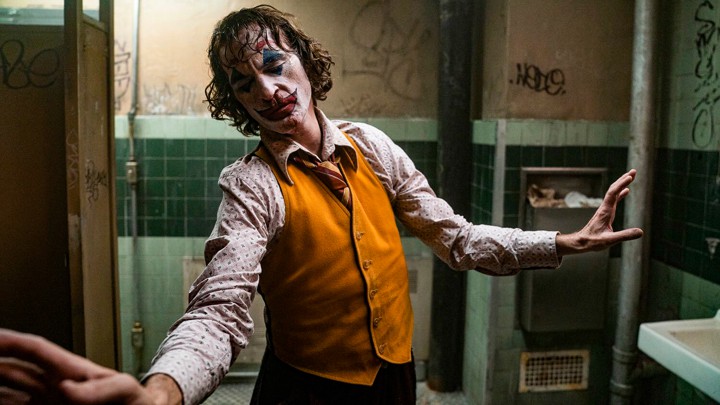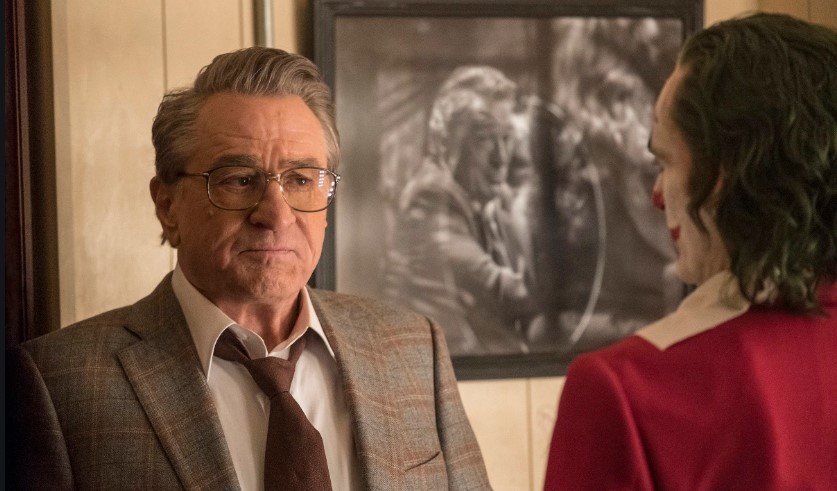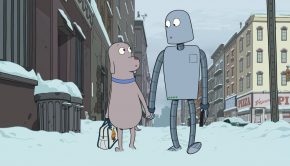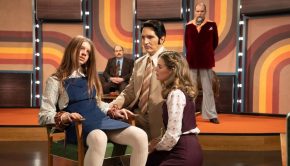Joker – Film Review
Reviewed by Damien Straker on the 8th of October 2019
Roadshow presents a film by Todd Phillips
Produced by Todd Phillips, Bradley Cooper, and Emma Tillinger Koskoff
Written by Todd Phillips and Scott Silver based on Characters by DC Comics
Starring Joaquin Phoenix, Robert De Niro, Zazie Beetz, Frances Conroy, Brett Cullen, Bill Camp, and Brian Tyree Henry
Music by Hildur Guðnadóttir
Cinematography Lawrence Sher
Edited by Jeff Groth
Rating: MA15+
Running Time: 122 minutes
Release Date: the 3rd of October 2019
Contains some spoilers
In Joker, a suitably creepy lead performance by Joaquin Phoenix is undermined by heavy-handed direction and a clunky screenplay. Comedic filmmaker Todd Phillips has attempted to transcend the comic book genre by imitating the crime dramas of Martin Scorsese from the 1970s and 1980s, specifically The King of Comedy (1982). However, all aspects of Phillip’s craft lack deftness and care to reach this impossible bar. Consequently, as a heavy drama and a character study, Joker is undermined by leaden, one-dimensional themes of class and mental health and an indecisive political rhetoric that the filmmaker approaches with a nonchalant shrug. It amounts to an irritable and uncomfortable experience that is half as strong as the classic films it seeks to imitate.
The film is a DC Comics origin story about how a failed comedian named Arthur Fleck (Phoenix) transforms himself into Batman’s archnemesis, the Joker. In 1981, Fleck lives a miserable life in a rundown Gotham City. As a clown for hire, he is beaten and robbed by punk kids. His boss grows impatient and his colleagues worry he is unhinged. He is further isolated by a condition that makes him laugh uncontrollably. His only friend is his elderly mother, Penny (Frances Conroy), with whom he shares an apartment. Yet he remains buoyed by his dream of being invited onto the talk show of his idol, Murray Franklin (Robert De Niro), and the affection of his neighbour, Sophie (Deadpool 2’s Zazie Beetz). After an incident on a train, where Fleck kills three Wall Street jerks, his actions have serious ramifications for the city’s elite, including mayoral candidate Thomas Wayne (Brett Cullen).
Todd Phillips is not a director associated with subtlety and good taste. After directing The Hangover (2009), he elongated his path of political incorrectness with two dire sequels and the lousy arms dealer comedy-drama War Dogs (2016). His attempt to forgo comedy entirely and create an ultra-serious, bleak crime drama out of a comic book (Alan Moore’s Batman: The Killing Joke is its inspiration) is feeble and lacking solid execution. Some levity and humour, for example, would have cut through Joker’s ugliness. Instead, its bleak, dour atmosphere, in the vein of Scorsese’s grittiest features, is persistent. It opens with the old Warner Bros. logo, and classic titles, and then we are injected into the graffiti‑stained, crime infested streets of Gotham City, which mimics a rundown New York City.
From here, Phillips rarely understands that less is more when asserting menace. For example, there is a scene where Fleck stumbles into someone else’s apartment. His hair is wet and matted from the thunderstorm storm outside and the television crackles loudly. A person looks on in horror at the hideous man sitting in their lounge room. To drive the point home, Fleck then puts a finger gun to his head, ala Travis Bickle in Taxi Driver (1976), and Hildur Guðnadóttir’s loud, intrusive score pounds away on the soundtrack. The scene typifies the film’s didactic form, its desperation to dramatise the anxiety surrounding Fleck’s psychosis. In another moment, Phillip’s camera zooms in deliberately on the back of Fleck as he sits down. Every bone protruding from his thin back comes into the audience’s focus. These on-the-nose stylistic choices overstate the character’s monstrousness when Phoenix’s commitment as an actor is entirely capable on its own of being bizarre and otherworldly.
He is one of the industry’s most daring chameleons and holds a monopoly on playing elusive, dishevelled oddballs. He embodies Fleck’s gaunt, contorted physicality to ensure that every loud, awkward laugh, and every stumble and clumsy run is felt by the audience. Yet just like the storm scene, there is rarely a moment where Phillips trusts the power of the actor’s self-expression. There is an ominous setup where Fleck stands on one side of a gate of a mansion opposite a boy. The image and Phoenix’s chilling presence speak for themselves. Naturally, the shot begins to echo Scorsese’s stalker thriller Cape Fear (1991), which also starred Robert De Niro. However, Phillips then adds his cumbersome writing into the scene by prolonging the moment with a dialogue-heavy confrontation.
In general, Joker’s screenplay, written by Phillips and Scott Silver, needed stronger fundamentals. The film explores four different plotlines: Fleck’s personal history, his relationship with Sophie, the train murders, and his attempts to feature on Murray’s show. Unfortunately, without a persistent character goal, Phillips fumbles between the threads, leaving Joker in a perpetual state of setup. It pales compared to how effortlessly The King of Comedy establishes Rupert Pupkin’s goal of becoming a comedian. Fleck’s dream of featuring on Murray’s show wavers in and out and is resolved by chance. In this thread, De Niro is fine as Murray, but it is a minor part that does not test his dramatic edge and Marc Maron (GLOW) is wasted in a walk-in cameo. There are also at least three times where Phillips forgoes all writing and pointlessly films Phoenix dancing in slow-motion, including most cringingly to Gary Glitter’s ‘Rock and Roll Part 2’. Why we are subjected to such a sight we may never know.
Meanwhile, the subplot involving Sophie is superfluous and could have been cut. She barely registers as a character and this thread’s revelation is bluntly explained by quick intercuts to earlier scenes as though the filmmakers were adamant the audience would not realise its implications. Compared to Comedy, the gimmick of the ‘unreliable narrator’, the blurring of fiction and reality inside Fleck’s head, is a cliché and lacks seamlessness. Joker’s most interesting thread leans towards a surprisingly unique twist involving Fleck’s upbringing. It will not be spoiled here except to say that the story shamelessly diverts from this potentially game-changing twist for DC, which hints at studio interference. Besides, what happened to this film being a standalone movie without ties to the broader DC universe?
The film’s dialogue and characterisations lack finesse too. An early exchange between Fleck and a social worker is hampered by clunky exposition such as, ‘have you thought more about why I was locked up?’ and ‘is it just me or is it getting crazier out there?’ Meanwhile, the frequency of the ‘smiling’ and ‘happiness’ motifs in the dialogue are overused. Fleck’s mother even calls her son ‘Happy’ and says, ‘don’t you have to be funny to be a comedian?’ in case it was not already apparent that he’s untalented. The film’s side characters do not resonate either. Brian Tyree Henry (Widows; If Beale Street Could Talk) is wasted by appearing in one scene as a clerk who fights with Fleck over a folder.
Some of the worst storytelling involves Thomas Wayne, the future mayor of Gotham City. His inclusion results in an embarrassingly clumsy expose of class warfare echoing Hillary Clinton. Following the murder of the Wall Street creeps, the mayor describes the lower-class people as ‘clowns’, which causes great uproar. The line is a lame, transparent recap of Clinton’s ‘basket of deplorables’ gaffe from the 2016 US presidential election. There is also a line about ‘super rats’, which recalls the Clintons’ ‘super predators’ comment. Furthermore, another cringing scene sees Fleck sneak into a theatre as a bellboy while the wealthy and powerful, including Wayne, watch Charlie Chaplin’s Modern Times (1936) and presumably eat caviar. Wayne’s overbearing characterisation and the image of people in their tuxedos are examples of caricatures used to depict the haves and have nots, which is certainly not what this serious drama intended.
As a gritty crime story, Joker’s plotting leaves much to be desired. Apparently, the police in Gotham City are too stupid to know Arthur is responsible for the train killings despite an incident at a hospital involving a gun where he was dressed as a clown and the train ride itself where he is the only person at the station in makeup. Batman, where are you? Likewise, the premise that people would violently riot following Wayne’s ‘clowns’ comment and see Fleck as a hero is as preposterous as any Trumpian conspiracy theory. DC fans might rush to say the moment is ambiguous, existing inside Fleck’s head, except that the movie climaxes with an interesting but ultimately ham-fisted connection to a pivotal event in DC’s canon.
Recent discourse has speculated whether Joker idolises dangerous white men and radical violence. Initially, the suggestion seems impossible when Fleck is clearly a psychotic weirdo. The film’s violence is hash, impacting, and upsetting, which is different from comic adaptations where death is meaningless. However, the longer Joker continues, the more in eye-rolling fashion it shifts our sympathy towards Fleck by using unpleasant side characters to paint him as a misunderstood victim of society. Consequently, Phillips is ideologically confused. He cannot decide whether he is demonising Fleck or creating a pro-fascist, Trump-like anti-hero to combat the political establishment.
By subtracting Batman and making Wayne an uncaring jerk who defunds medical treatment, it is all too clear whose side Phillips favours. One hopes DC fans realise that Joker’s representation of class warfare is not a nuanced portrait of real life. In a climax channelling Network (1976), Fleck says ‘you decide what is right and wrong like what is funny or not’. The line is a cop-out, typifying Hollywood’s uncertainty about handling politics in mainstream movies. It will be also interesting how Trump voters react to this scene too given how outspoken one of the film’s actors has been against the president.
Joker is exactly what the title character would have wanted: a violent crime-spree that pitches people against each other and sends them raging while he walks away with the box office cash. Phoenix is solid in his physicality and presence as Fleck, but the creepy portrayal sits below the fun and complexity of Heath Ledger’s take in The Dark Knight (2008), which was crazy and measured, but also funny, manipulative, and devious. On this note, Todd Phillips is not Christopher Nolan let alone Scorsese. His direction is too heavy-handed and didactic, too eager to ensure that every piece of insanity is underlined in red. It makes the film obvious and draining in its themes, expressions, and mood. It postures as a serious companion to Scorsese’s best films but lacks its own credible message and a clear ideological viewpoint. It is simply another comic book origin story, hampered by lumpy writing and dubious political ideas that seldom does it understand.
Summary: In Joker, a suitably creepy lead performance by Joaquin Phoenix is undermined by heavy-handed direction and a clunky screenplay.

